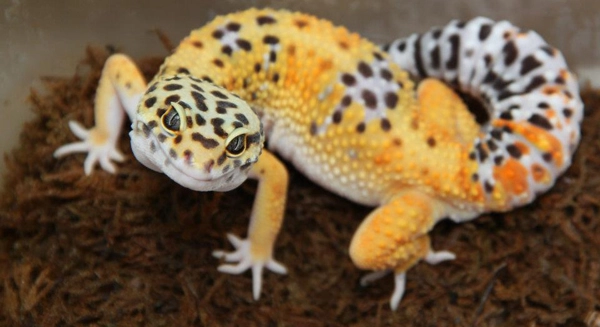Leopard geckos are tough tiny creatures, but if their owner hasn’t done their study, many of them spend subpar lives in their cages. Even experienced reptile keepers might make mistakes when it comes to caring for their pets’ reptiles. Here are some things to avoid doing that might harm your pet and prevent it from reaching its full potential. Keep reading the post to get to know about all the mistakes you should avoid if you are planning to own a gecko.
Table of Contents
Constantly Changing Cleaning Procedures
It is a typical blunder for newbies to fail to thoroughly clean their lizard’s enclosures. It is possible, however, to sanitise their environment to an excessive degree. Your lizard will not be able to develop a robust immune system if you constantly clean their cage. There is a corresponding truth to this. Pathogens thrive in filthy environments, and this may lead to disease. The frequency with which reptile tanks should be deep-cleaned varies from species to species, although daily spot cleaning is recommended for all. Depending on the lizard’s species, a thorough cleaning should be done every two to four weeks.
For newbies, it’s a good idea to use a cleaning checklist and routine. Doing spot cleaning on a daily basis is a must. Add fresh substrate as required and clean the habitat of any excrement or unclean substrate. All water dishes should be cleaned and refilled with fresh water, no matter whether they are used for drinking or for soaking.
Moving your pet lizard to an interim cage while the house is being cleaned and dried can save you time and effort when doing a deep clean. Removing any substrate and furnishings is a good place to begin. Soap and hot water should be used to wash the substrate and any furnishings (save for live plants). Soap and hot water should be used to clean the tank, which should then be allowed to air dry.
Supplements Are Not Being Provided
Supplements for geckos, particularly for young ones or breeding females, are a fantastic idea. Supplements may help prevent metabolic bone disease in its early stages (MBD.) The increased calcium aids in egg production for women. It’s common for leopard geckos to be kept in an enclosure where they may lick calcium powder at their own pace. It’s also possible to sprinkle insects with supplement powder before putting them in your leopard gecko aquarium.
Together, Keeping Leopard Geckos
Leopard geckos should not be maintained with other pets unless you want to breed them. Small hatchlings and young geckos are often housed together in pet stores, and leopard geckos may be thought of as a common pet. It is possible for geckos to become territorial and compete for food or shelter after they reach adulthood Most experienced leopard gecko keepers only maintain one leopard gecko per cage or make sure that there is enough room for both animals if they are living together. It’s better to avoid keeping leopard geckos alongside other species if they don’t tolerate each other very well.
Using Incandescent Or Fluorescent Heat Bulbs
You may be asking what’s wrong with utilising a heat light on your leopard gecko. Consider the sleeping habits of leopard geckos. This means that you’ll seldom see them sunbathing in the open throughout the day, unlike other reptiles. Leopard geckos may not be strictly nocturnal, but that doesn’t stop them from preferring to sleep at night. They will not be in touch with anything heated by a heat lamp, so that is a relief.
Because of their hardiness and adaptability, leopard geckos may survive for decades under ideal circumstances. Some of the most frequent leopard gecko care and feeding blunders may easily be avoided by those with a little more experience with leopard geckos.
We wish you the best of luck in maintaining your pet’s good health with these pointers. Be careful to seek the advice of a certified veterinarian if you have any questions or concerns.
